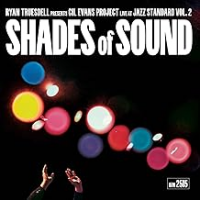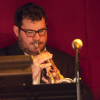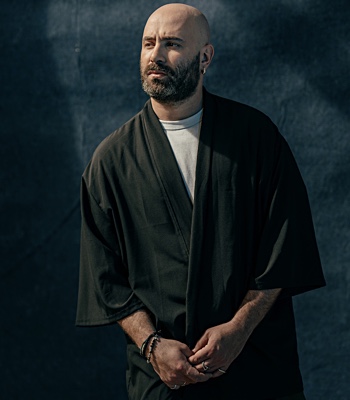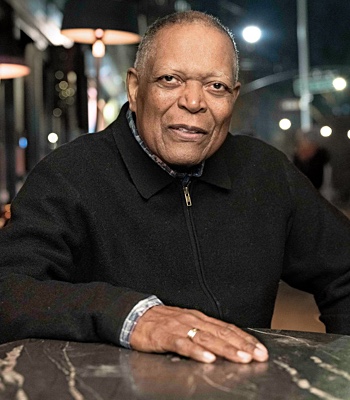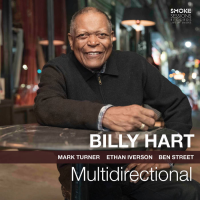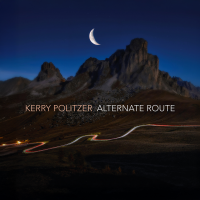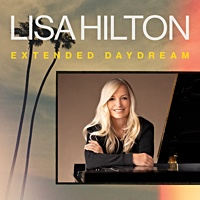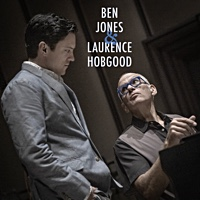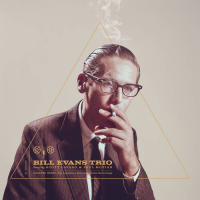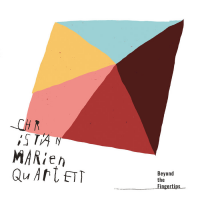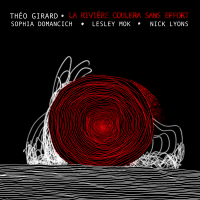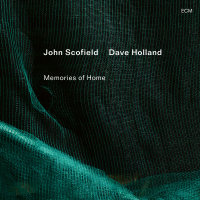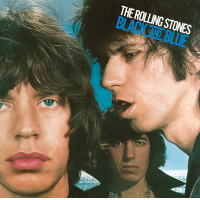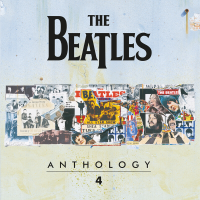Home » Jazz Articles » Album Review » Ryan Truesdell / Gil Evans Project: Shades Of Sound
Ryan Truesdell / Gil Evans Project: Shades Of Sound
Evans was one of the greatest composer arrangers in jazz. Harrison coined a new phrase for him, describing what he did as re-composition.
Evans embodies the paradox of a man with real creative power of great imaginative resource, who was unable to produce an original theme. He could, as it were, make the sturdiest oak trees tower above us, yet he had to be given an acorn first, once this had set his imagination going, the Invention mysteriously overflowed... It seemed to matter little whether his found object was a beautiful melody or a piece of commonplace figuration. Disconcertingly complete transformation would take place, turning the banal into the magical, uncovering relationships between passages of music that had seemed to be of utterly different character... Recomposition amounts to a piece being deconstructed and its elements being reassembled at a higher level of integration so that the whole takes on new and more complex meanings (Harrison in Kenny, Jazz Views, 2022).
"Spoonful" starts with space and Frank Kimbrough's piano is achingly close to the Evans way of playing. There is an almost eerie astringent quality to the piano. "Spoonful" originated on The Individualism of Gil Evans (Verve, 1964). It was written by Willie Dixon and sung by Howlin' Wolf, which is where Evans heard it. Donny McCaslin's tenor solo is played out against the insistent musical theme. The texture from the orchestra has the Evans richness and complexity as the power builds with McCaslin creatively embroidering over the steady bass of Jay Anderson. The spare orchestral figures drive the tenor. The trumpet is calmer as he rides over the figures from Kimbrough. The trombone-led interpolations see the piece to its brassy conclusion, powered by Lewis Nash. "Spoonful" was a late addition to The Individualism of Gil Evans. Evans, at first, was unhappy with the track and it was only when a revision was proposed that he decided on its inclusion.
Truesdell's work is important because he takes the work of one of the greatest artists and reminds us what a great writer Evans was and how writing for the jazz orchestra can be created with textures that are subtle and beautiful and also can inspire great improvisers. Repertory music can, in addition, move people back to the originals. After all, Evans was not afraid to look back for inspiration from the past. Never content with the way of writing for the jazz orchestra, Evans rethought the melody of the Kurt Weill piece, "The Barbara Song," from The Threepenny Opera.
Truesdell's "Barbara Song" goes straight into the magic of woodwind sounds with Kimbrough's sensitive piano. Evans always denigrated his own pianistic ability but, here, there is economy and carefully considered dissonance against the woodwinds and flutes. The sensitive rhythm, in the steps of the original drummer, Elvin Jones, softly propels the piece. The blend of woodwinds against the low brass is mesmerizing. The emergence of McCaslin's tenor, so layered over the piano, has an ineffable subtlety. McCaslin has the unenviable task of following Wayne Shorter, which he does with conviction and subtlety. The 1964 original is one of the great compositions in jazz, and Truesdell's version has its own definite qualities. The background textures are a carefully-woven cushion for McCaslin to lean on as he explores. This is writing and playing at its finest.
Ryan Keberle eventually carries the melody on "The Ballad of the Sad Young Men." The piece was originally part of the Great Jazz Standards 1959 album (World Pacific). Keberle's solo is entirely in keeping with the disillusionment of the original, without being a straight copy. The background textures are intriguing and played beautifully by the orchestra, which captures the sombre mood of the piece.
"Neetie's Blues" is a 'found piece,' never played before. Truesdell found a sketch amongst Evans' papers and worked out the orchestration. There is a beautiful rocking rhythm, with backgrounds voiced appropriately. The solo is from Tom Christensen. Truesdell, in the album notes, writes about the addition to Evans' "vast oeuvre." It is true that any additions are welcome, but Evans did not have a vast oeuvre. He was a slow writer and there were years when he wrote little.
Truesdell includes some vocal pieces and Evans did at times write for vocalists. There were albums over time, featuring Marcy Lutes, Astrud Gilberto and Helen Merrill. Wendy Gilles sings two songs from the Claude Thornhill period.
To finish the album, there is "Buster's Last Stand," a piece that Evans wrote for Thornhill. It is the oldest piece, and goes back to the 1940s, showing that even when Evans was being conventional, he was able to be creative. It is interesting to hear the orchestra finding the right registers for the 1940s solos.
Evans' work can be separated into three phases: the pre-Miles Davis work, the Davis recordings and the post-Davis work. This Truesdell album concentrates on music written and arranged before 1964. Shades of Sound was recorded in 2014, and hopefully Truesdell will feel inspired to give life to more Evans' pieces. There would probably be many who would enjoy savouring a new version of "Davenport Blues," "Ella Speed" and "Chant of the Weed."
All power to Ryan Truesdell on Shades of Sound, the companion to his earlier Evans-related Lines of Color (Blue Note, 2015).
Track Listing
Spoonful; The Ballad of the Sad Young Men; Laughing at Life; Neetie’s Blues; I Had Someone Else Before I Had You; Barbara Song; It’s the Sentimental Thing to Do; Buster’s Last Stand.
Personnel
Ryan Truesdell
composer / conductorSteve Kenyon
saxophoneSteve Wilson
saxophoneDave Pietro
saxophone, altoDonny McCaslin
saxophone, tenorScott Robinson
saxophone, tenorBrian Landrus
saxophone, baritoneTom Christensen
saxophone, tenorAlden Banta
woodwindsAdam Unsworth
french hornDavid Peel
french hornAugie Haas
trumpetGreg Gisbert
trumpetMat Jodrell
trumpetRyan Keberle
tromboneMarshall Gilkes
tromboneGeorge Flynn
tromboneMarcus Rojas
tubaJames Chirillo
guitarFrank Kimbrough
pianoAdditional Instrumentation
Jay Anderson: bass; Lewis Nash: drums; Lois Martin: viola; Wendy Gilles: voice.
Album information
Title: Shades of Sound | Year Released: 2025 | Record Label: Outside in Music
Tags
About Ryan Truesdell
Instrument: Composer / conductor
PREVIOUS / NEXT
Support All About Jazz
 All About Jazz has been a pillar of jazz since 1995, championing it as an art form and, more importantly, supporting the musicians who make it. Our enduring commitment has made "AAJ" one of the most culturally important websites of its kind, read by hundreds of thousands of fans, musicians and industry figures every month.
All About Jazz has been a pillar of jazz since 1995, championing it as an art form and, more importantly, supporting the musicians who make it. Our enduring commitment has made "AAJ" one of the most culturally important websites of its kind, read by hundreds of thousands of fans, musicians and industry figures every month.


